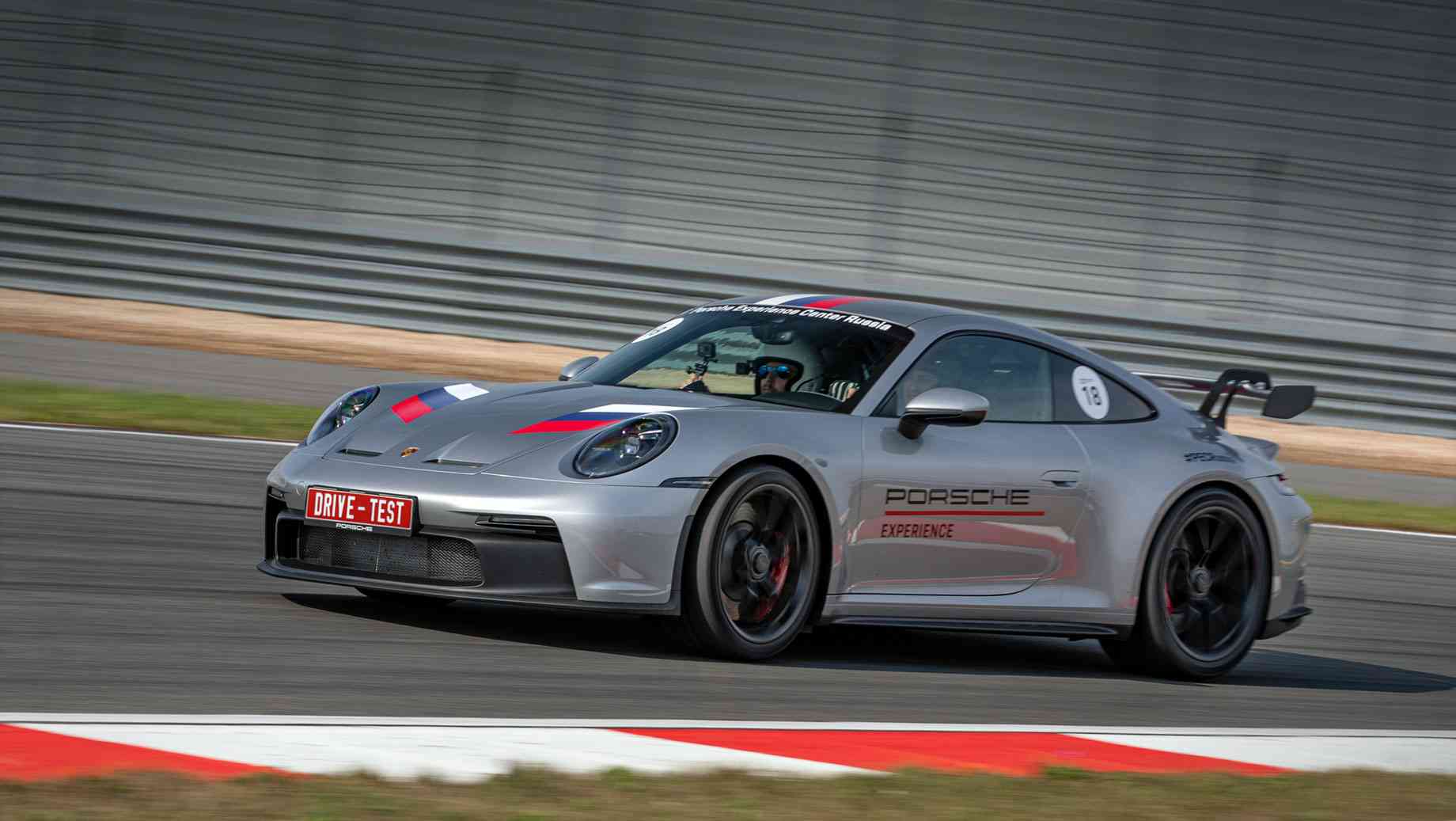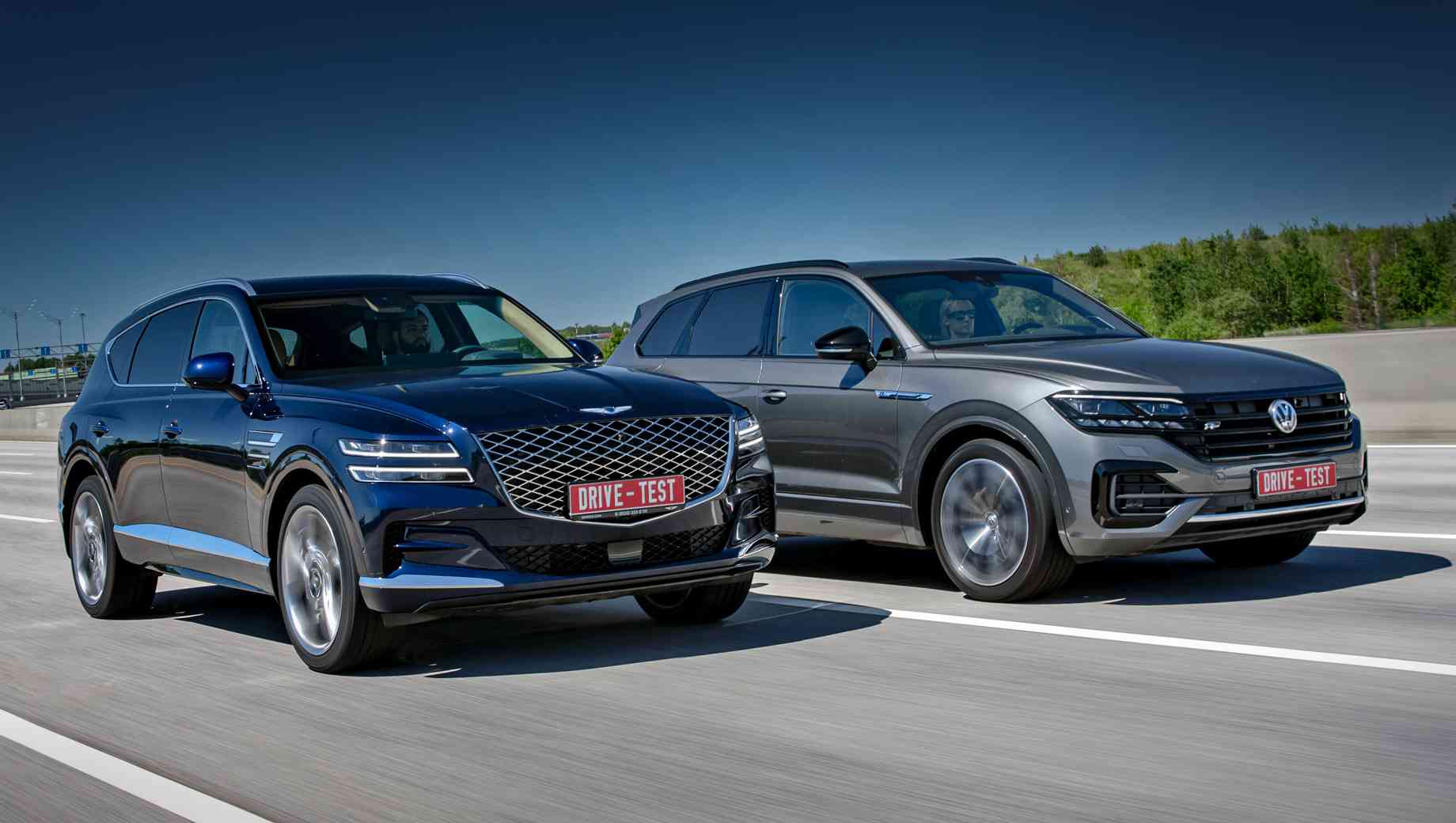With the purchase of Cayman, I suddenly began to visit Moscow Raceway not for work, but for the soul. I even find it difficult to say where this desire to get up early on Saturday morning and cut 80 km from Moscow comes from in general in order to drive one or two sessions. And not for all the money, for pleasure. Not a currency on the straight lines, I do not force the brakes, I pass only twisted sections with a twinkle.
And imagine, it turns out that I don’t know very well how to drive really fast on the Raceway, which I have known for nine years. It’s a common thing to rush beautifully so that it looks interesting in the frame. Being efficient is a completely different skill, which is very handy to get acquainted with the long-awaited Porsche 911 GT3 of the 992 series.
The standard palette is poor. For “metallic” you have to pay extra 105 thousand rubles. But the GT3 is often ordered in an individual color from the factory library for 840 thousand or according to the client’s sample for 1.5 million. Gold wheels are a spirit of time. Black calipers will cost 70 thousand.
Oleg Keselman, you know, organized something more interesting than a simple test drive on the track. Usually, after all, how is it done: they put the journalists in a column after the instructor, drove a few laps with a small train – they are free. Here, the six-hour event is based on the program of the most advanced courses of the Porsche branded driving school, which has been led by our test driver for many years. The Moscow Raceway ring is divided into sections, and we each iron for a long time under the supervision of Oleg and his team.
Keselman has not yet timed a circle on Moscow Raceway for the new GT3, but judging by the speeds in the reference places, he suggests that a beginner can take off almost half a second from the time of the more powerful “eraski” of the previous generation.
Unlike real students who buy out the day behind the wheel of a certain Porsche, we have to change places from time to time with a partner and – cars with other crews. Personally, this is only good for me. Firstly, there is a reliable companion and author of Drive, the Belgian Jan Coomans, nearby. He is an amateur racer, one of the fastest time attack pilots in a Porsche. He knows MRW well, can not only prompt, but also show. I travel with a personal trainer.
Coomance feels equally comfortable in rain and dry weather. Nobody except us uses helmets with him at this event, because we attach action cameras to them. I hope the section of the Drive “Our Videos” will be replenished with a small reportage over time.
Secondly, the 420-horsepower Cayman GT4 coupes, like Jan’s, are used as substitutes, only with the PDK preselective “robot” instead of the “mechanics”. This newest version of the 718, barely starting to be sold in Russia, immediately gained popularity among fans of amateur competitions and track days. In a word, we have here not one, but two hot track novelties at once!
After the release of the Cayman GT4 with PDK, the three-pedal modification is no longer needed by anyone. Although, for example, Jan’s great times on the tracks where the Porsche Sport Challenge is held prove that she should not be written off.
The catch is that the mid-engined Cayman does not shine against the background of a well-tuned GT3 straight from the factory. That is, the accelerating dynamics, for example, is good, and the sound of the aspirated 4.0 will wake up the dead. The steering feel and tight brakes are just as good as the older Flacht model. However, it has long been known that the standard wheel alignment angles are not suitable for the track. In addition, Caymans are naturally sensitive to tire choice, and schoolchildren are shod in a Michelin Pilot Sport 4S instead of the more tenacious regular Capa 2.
On a car with PDK, the Cayman engine develops 430 N • m against 420 in the three-pedal version. The claimed acceleration to 100 km / h was reduced by half a second to 3.9 s. The engine code has changed: from DKD in 2020 to DWA. New exhaust gas converters are specified in the latest vehicle type approval.
As a result, the 718’s obsessive failure contrasts painfully with the 911’s near-neutral handling. Transferring to the Cayman from the GT3, you quickly get tired of the stubbornness of an unconfigured car. Informative, but no more. Therefore, with your permission, I will not dwell on GT4 in detail. One hell, in the hands of the owners, these cars are transformed beyond recognition in a matter of days after purchase. Let’s talk about GT3, and if necessary, you can discuss the 718 in the comments or on Drive2.
Cayman GT4 on road tires played a drifting exercise. It’s easier to slide without additional provocation than the GT3, and easier to control. Compared to the three-pedal modification, the “robot” has a stricter differential lock.
If it weren’t for the revolutionary double wishbone front suspension a la the racing GT3 R and RSR, the new GT3 would be a redesign. Units of the previous generation 991.2 migrated to a stronger and more aerodynamic body with minimal changes (see “Technique”). For example, I have already told you in detail about the 510-horsepower engine that debuted on the Speedster. And in the two years that we are familiar, the aspirated 4.0 with individual chokes has not added power.
Oil temperature GT3 hovers around 110ºC. The motor on the Cayman GT4 from the second fastest lap, according to Ian, flies at 135º. To give credit to the standard 450-horsepower Carrera S of instructors: thanks to the turbo engine, in the hands of a skilled person, it is not much slower than a GT car.
Even the “robot” remained seven-speed, while the other 911s now have one more gear. It’s a pity that the international test drive took place without Russian journalists because of the covid – it would be interesting to find out first-hand why the more modern box did not please Flakht. I suspect that the GT division simply did not have the budget to adapt it to its unique engine.
Together with the “robot” GT3 992 inherited from its predecessor a normal gear lever. It not only looks more solid than a comical toggle switch, but also allows you to manually change gears in the old fashioned way, and not only with the steering column switches. I’ve heard buyers of other 992s are already wondering if they can fit a GT3 selector there. Alas: the cable drive of the parking mode is preserved here, and in civilian models the box is controlled exclusively by wires.
The interior is finished in Alcantara by default. Leather, as here, will cost 354-454 thousand rubles, depending on the color of the contrasting trim. The multifunction steering wheel has no alternative, but I did not notice any accidental button presses. In addition, you can order its heating.
If you remember, the aspirated homologation was originally developed for the PDK: the pre-styling 991 generation did not imply an alternative transmission at all. Therefore, there is nothing surprising in the fact that eight years later, the twice modernized vociferous motor with a cutoff at nine thousand gets along well with the “robot”. At least in the extreme conditions of the track.
The ring specificity of the 911’s traction control almost does not imply part-load movement: you either push the GT3 with the brakes into the very apex, or accelerate at full throttle. And, of course, no rental! In automatic mode, the box unmistakably selects low gears with intensive deceleration, preventing the engine from falling below five and a half thousand revolutions. For the most part, it operates in the 6500–8800 range, responding greedily to any movement of the right pedal.
GT3’s voice is still high, but it has become more melodious, hoarseness in it has diminished. Among the useful options is a carbon fiber roof for 303 thousand rubles.
There is a sense of maturity in the relationship between the powertrain components. Upshifts have become smoother due to clutch slippage and are not accompanied by exhaust firing characteristic of the previous generation. I believe this is due to the tightening of environmental standards. And for those who, like Jan, prefer a strictly manual mode, on the contrary, they added ostentatious sportiness. When changing gears, jerks are felt, however, not upsetting the balance on the arc.
Start from the launch is swift and soft at the same time. Porsche resists shock loads by subtly juggling the moment. The balance between wheel slip and clutch friction is maintained even when the stabilization system is completely deactivated. The claimed acceleration time to hundreds – 3.4 s – remained the same (as well as the maximum speed of 318 km / h). Those who need to tear their opponents off the traffic lights and on the Autobahns should choose the Turbo or Turbo S.
The turbos at the GT event are just a safety net, but we quickly put them into circulation so as not to waste track time sitting in the passenger seat. Put evil, stable tires on the Turbo S and nobody can catch up, including the GT3.
The top model, by the way, can go around everyone on the Raceway. On it, we also grabbed optional. But its strength lies in acceleration from slow corners and speed on straight lines. You don’t get as much fun on the aerobatic stages as driving a lightweight GT3. He’s not so light, the skeptic will say – one and a half tons with a driver, five kilograms heavier than its predecessor. Everything is relative. Carrera, for example, gained tens of kilograms during the generational change. But what to go far – the GT3 weighs 15 kg less than the compact Cayman GT4! So who really would benefit from a diet.
As a plus for the Cayman GT4, I will write down the old-school interior with analog devices and the ability to order a car without a multimedia system at all.
I have no experience of driving the previous generation GT3 on the track, we only crossed on public roads. Therefore, the impressions of the new one-sidedly enthusiastic. He’s just awesome: passionate, tenacious, agreeable and does not require getting used to, unlike, for example, the Cayman GT4. It strictly follows a light steering wheel, responds with lightning speed to a change in thrust and the redistribution of mass caused by it. The 911 rolls ridiculously little and, as it were, in pursuit of the already perfect course change. If necessary, the trajectory is corrected by the minimum movement of the sensitive accelerator.
The 911 naturally has no problem with dumping or braking thanks to the pendulum effect created by the rear engine. This is the basis of the aerobatics style with the so-called trail-breaking, intrusion it is not possible to evaluate the smoothness of the course. But I happened to drive several slow circles behind the camera car at a speed of 40 kilometers per hour. In this mode, the Porsche shakes even on the perfect racing pavement. An unambiguous signal is also contained in the chassis management menu – there are only two programs for adaptive dampers: Sport and Track. No “normal” for you. Finally, the GT3 is very noisy.
At low speeds suitable for photography, there is no significant difference between sport and track suspension settings.
Nevertheless, in front of you is a car that at least partially reconciled me with the 992 generation. It looks unconditionally cool, and the front bumper is especially pleasing, thanks to an array of unpainted plastic and a utilitarian mesh that protects the radiator. This Porsche is equipped not only with a charismatic naturally aspirated engine, which in itself is already a serious competitive advantage in the fight for the heart of the petrolhead, but also a manual transmission – a magnificent six-speed model of 2016.
For the selector of the seven-speed “robot”, a unique detail has been created with an upper detent in the image and likeness of the “mechanics” knob, which is used on the Carrera S with a seven-speed print.
The Touring version is immediately available to order without a wing and surcharge. True, its chassis is in no way adapted for public roads. But this is a real find for the Porsche geek. The retractable spoiler in the raised position allows you to see the engine – a luxury by today’s standards! In addition, the Touring is not a shame to order without the Sport Chrono package, which does not affect the speed, and thus get rid of the stopwatch sticking out above the panel. What is there – on the Touring, originally invented as a three-pedal purist version, PDK is installed for free!
You look into that face – and it’s even a shame that the wingless version of the Touring is equipped with a bumper in body color. In the configurator, you need to add an option that allows you to leave unpainted plastic – it looks cool, businesslike. Now for this you have to buy a separate part from the GT3.
It is not even clear what more to wish for. Isn’t the Speedster as a permanent, not limited edition model. Let’s, maybe, straight from the restyling? Well, taking advantage of the fact that the GT3 is already technically very conservative, I would like to see some kind of Spartan version, free from the multimedia burden. However, so far no prerequisites for this have been noticed. On the contrary, the digitalization of GT cars continues: for example, a hybrid version of the GT3 has been seen in trials …
Demand is avalanche by Porsche standards. According to Keselman, the quota for the GT3 has swelled to several dozen cars, and almost 70 sports cars are prepaid.
During a training day at GT3, I managed to get even deeper into this strange state, which does not allow me to sleep peacefully on weekends, taking me to the track. Previously, it seemed that rubbing the same ring to the holes was boring if it was not the 20-kilometer Nürburgring. Porsche makes this an integral part of automotive life. And if you get involved, having in stock 14 million for a car for a not very long weekend, the GT3, in my opinion, completely covers the need for a trush track tool without the hassle of settings and a guarantee.



Leave a Reply